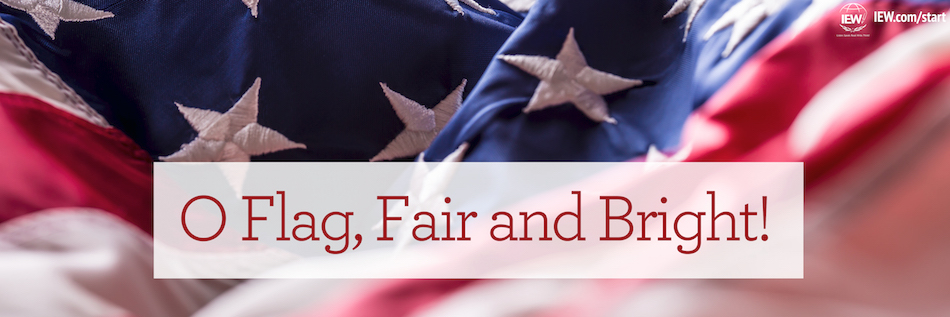
by Jacob Mauser
When people think of patriotic holidays, the first thing that comes to mind for many is probably Independence Day. Memorial Day and Veterans Day follow, and after that (if remembered at all) is humble little Flag Day. Flag Day is not even a federal holiday—it is at the president’s discretion to proclaim its celebration every year. Nevertheless, parades are held across the country in recognition of one of our most prevalent national symbols.
The American flag was first officially recognized on the 14th of June, 1777. At the time the new flag was likely intended as a naval ensign, but it quickly began to catch on around the nation. Its attention-grabbing red-white-and-blue design endeared it not only to the Navy, but to the people of the new nation as well, and patriotic sentiment kept it in place after the close of the Revolution. More stars were added in 1795 to reflect the addition of Vermont and Kentucky, and in 1818 Congress passed an act resolving to add a star for every state in the Union. Even after that, however, the flag was still a rare sight. It would take another brutal war to finally elevate the flag to its modern standard of recognition, and in 1860 war did come. In December of 1860, the U.S. garrison moved from Fort Moultrie to Fort Sumter in what has been called the opening move of the Civil War. In the aftermath of the new conflict, the Stars and Stripes became a symbol of patriotism and of rejection of the Confederacy. The flag was mass-produced for the first time, and it fluttered above not only government properties, but above stores, churches, and private homes. The first Flag Day celebration occurred only half a year later in Hartford, Connecticut, with prayers for the success of the Union. Small, sporadic celebrations were observed in the years following and saw a great deal of popularity.
In 1916 Woodrow Wilson officially proclaimed June 14 as Flag Day, and in 1949 the holiday was established as an act of Congress. Traditionally, the president issues a proclamation urging citizens to fly the flag over the course of the week. In towns across America our flag is ceremonially raised to a chorus of the national anthem, and people line the streets to watch patriotic parades.
Our flag inspired Francis Scott Key with its persistence above Fort McHenry. It has waved tattered and worn over Iwo Jima. It stands static on the surface of the moon, where it will remain essentially forever. We salute it during sporting events, and it drapes the caskets of our soldiers when they take their final trip home. It is a symbol of celebration and conflict, but ultimately one of hope.
This Flag Day, take a moment to notice our nation’s flag as it flies in your community. Perhaps share this poem with your students. The lines were taught to schoolchildren more than a century ago, but they still ring true today.
“O Flag of Our Union”
O flag of our Union,
To you we'll be true,
To your red and white stripes,
And your stars on the blue;
The emblem of freedom,
The symbol of right,
We children salute you,
O flag, fair and bright!
Works Cited
"History of the American Flag & US Flag History." Drexel University Online,
https://online.drexel.edu/flag-history.aspx. Accessed 06 June 2017.
"The Flag in the Civil War." Smithsonian Institution,
https://amhistory.si.edu/starspangledbanner/the-flag-in-the-civil-war.aspx. Accessed 06 June 2017. .
"The History of Flag Day." CT State Library, https://ctstatelibrary.org/june-14th-is-the-
150th-anniversary-of-connecticut-flag-day. Accessed 06 June 2017.
|
Homeschooled through high school, Jacob Mauser currently attends Stetson University and is double majoring in English and Philosophy. In addition to reading literature and writing, he enjoys craft coffee and photography. He hopes to someday earn his Ph.D. and encourage a new generation of learners to reason, think, reflect, and write. |

